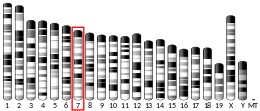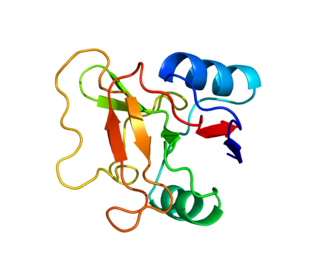
L-selectin, also known as CD62L, is a cell adhesion molecule found on the cell surface of leukocytes, and the blastocyst. It is coded for in the human by the SELL gene. L-selectin belongs to the selectin family of proteins, which recognize sialylated carbohydrate groups containing a Sialyl LewisX (sLeX) determinant. L-selectin plays an important role in both the innate and adaptive immune responses by facilitating leukocyte-endothelial cell adhesion events. These tethering interactions are essential for the trafficking of monocytes and neutrophils into inflamed tissue as well as the homing of lymphocytes to secondary lymphoid organs. L-selectin is also expressed by lymphoid primed hematopoietic stem cells and may participate in the migration of these stem cells to the primary lymphoid organs. In addition to its function in the immune response, L-selectin is expressed on embryonic cells and facilitates the attachment of the blastocyst to the endometrial endothelium during human embryo implantation.

CD11c, also known as Integrin, alpha X (ITGAX), is a gene that encodes for CD11c.
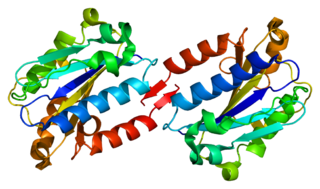
Integrin, alpha L , also known as ITGAL, is a protein that in humans is encoded by the ITGAL gene. CD11a functions in the immune system. It is involved in cellular adhesion and costimulatory signaling. It is the target of the drug efalizumab.

Complement receptor type 2 (CR2), also known as complement C3d receptor, Epstein-Barr virus receptor, and CD21, is a protein that in humans is encoded by the CR2 gene.

Chemokine ligand 19 (CCL19) is a protein that in humans is encoded by the CCL19 gene.

Leukosialin also known as sialophorin or CD43 is a transmembrane cell surface protein that in humans is encoded by the SPN (sialophorin) gene.

MAP kinase-activated protein kinase 2 is an enzyme that in humans is encoded by the MAPKAPK2 gene.

Alpha-actinin-3, also known as alpha-actinin skeletal muscle isoform 3 or F-actin cross-linking protein, is a protein that in humans is encoded by the ACTN3 gene located on chromosome 11. All people have two copies (alleles) of this gene.

Alpha-actinin-4 is a protein that in humans is encoded by the ACTN4 gene.

DNA-binding protein Ikaros also known as Ikaros family zinc finger protein 1 is a protein that in humans is encoded by the IKZF1 gene.

Hematopoietic lineage cell-specific protein is a protein that in humans is encoded by the HCLS1 gene.

Junctional adhesion molecule C is a protein that in humans is encoded by the JAM3 gene.

F-actin-capping protein subunit alpha-1 is a protein that in humans is encoded by the CAPZA1 gene.

Leukocyte-specific transcript 1 protein is a protein that in humans is encoded by the LST1 gene.

CD6 is a human protein encoded by the CD6 gene.

Dedicator of cytokinesis protein 2 (Dock2) is a protein encoded in the human by the DOCK2 gene. Dock2 is a large protein involved in intracellular signalling networks. It is a member of the DOCK-A subfamily of the DOCK family of guanine nucleotide exchange factors (GEFs) which function as activators of small G-proteins. Dock2 specifically activates isoforms of the small G protein Rac.

Intercellular adhesion molecule 5 is a protein that in humans is encoded by the ICAM5 gene.

Vascular non-inflammatory molecule 2 is a protein that in humans is encoded by the VNN2 gene.
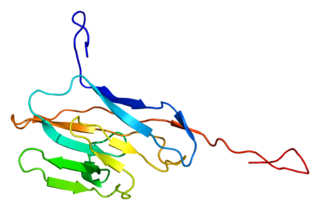
Carcinoembryonic antigen-related cell adhesion molecule 8 (CEACAM8) also known as CD66b, is a member of the carcinoembryonic antigen (CEA) gene family. Its main function is cell adhesion, cell migration, and pathogen binding.
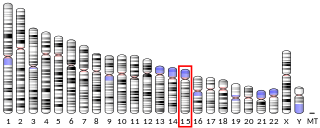
Tropomodulin 2 (neuronal) also known as TMOD2 is a protein which in humans is encoded by the TMOD2 gene.


